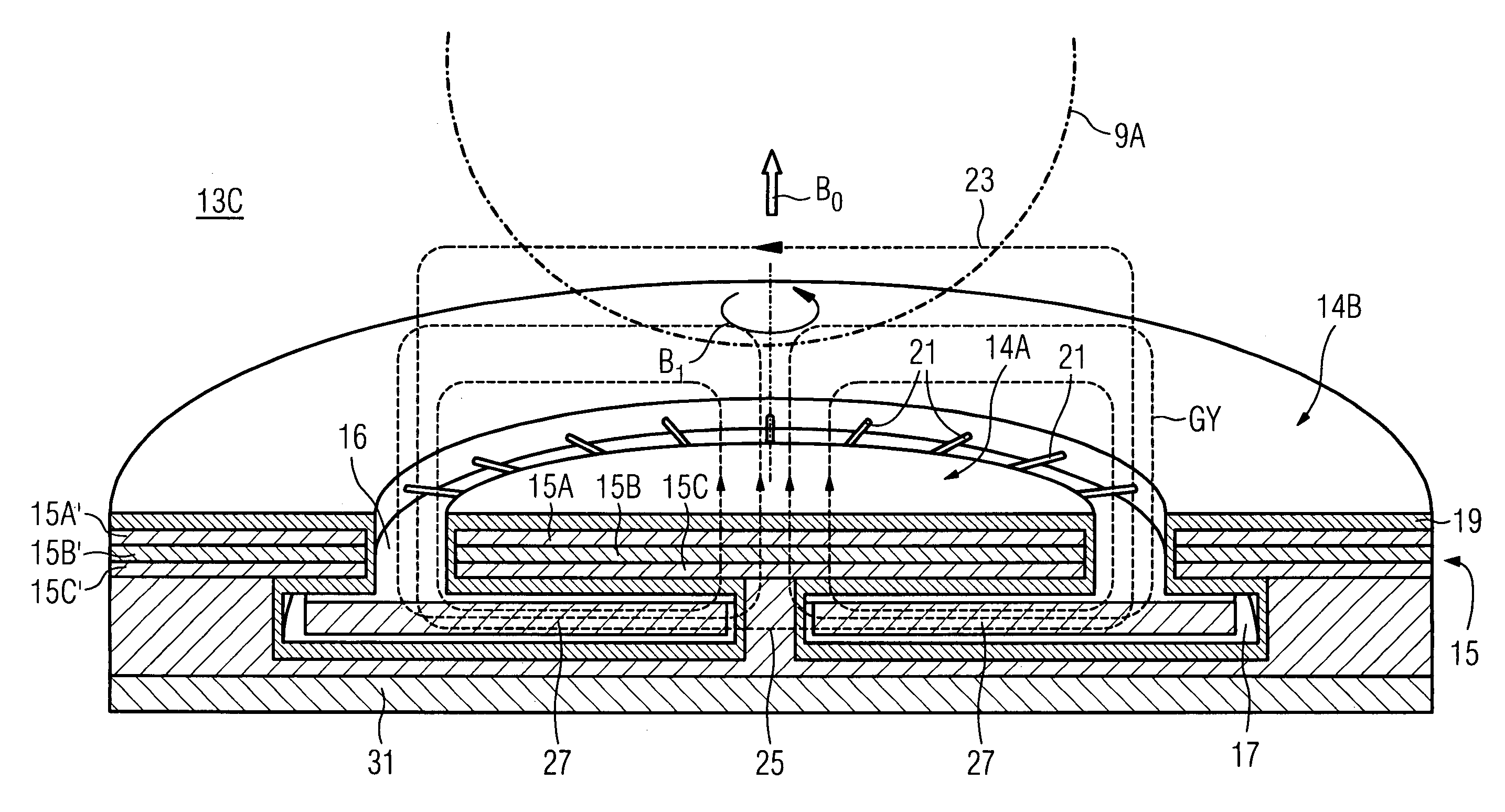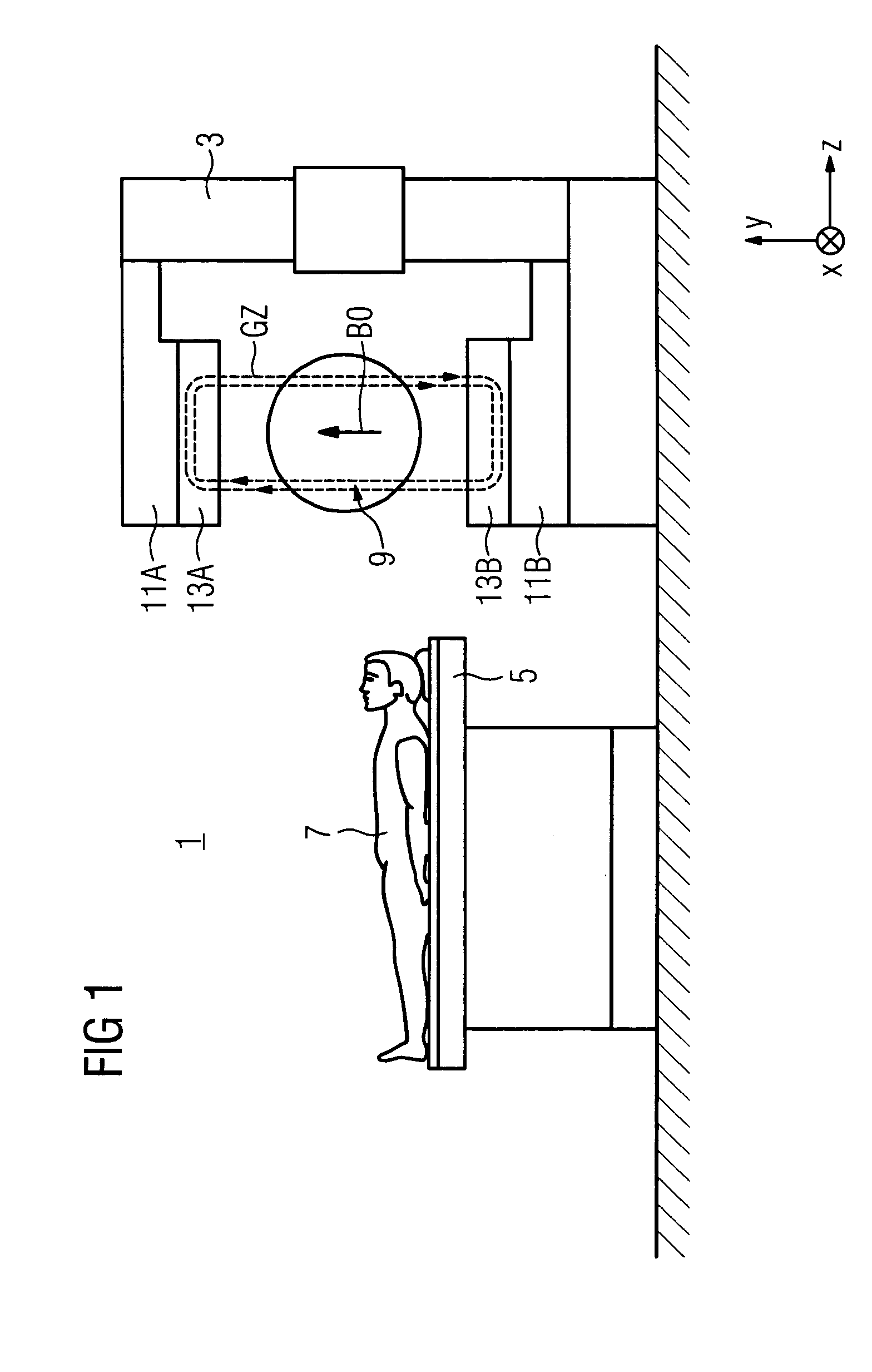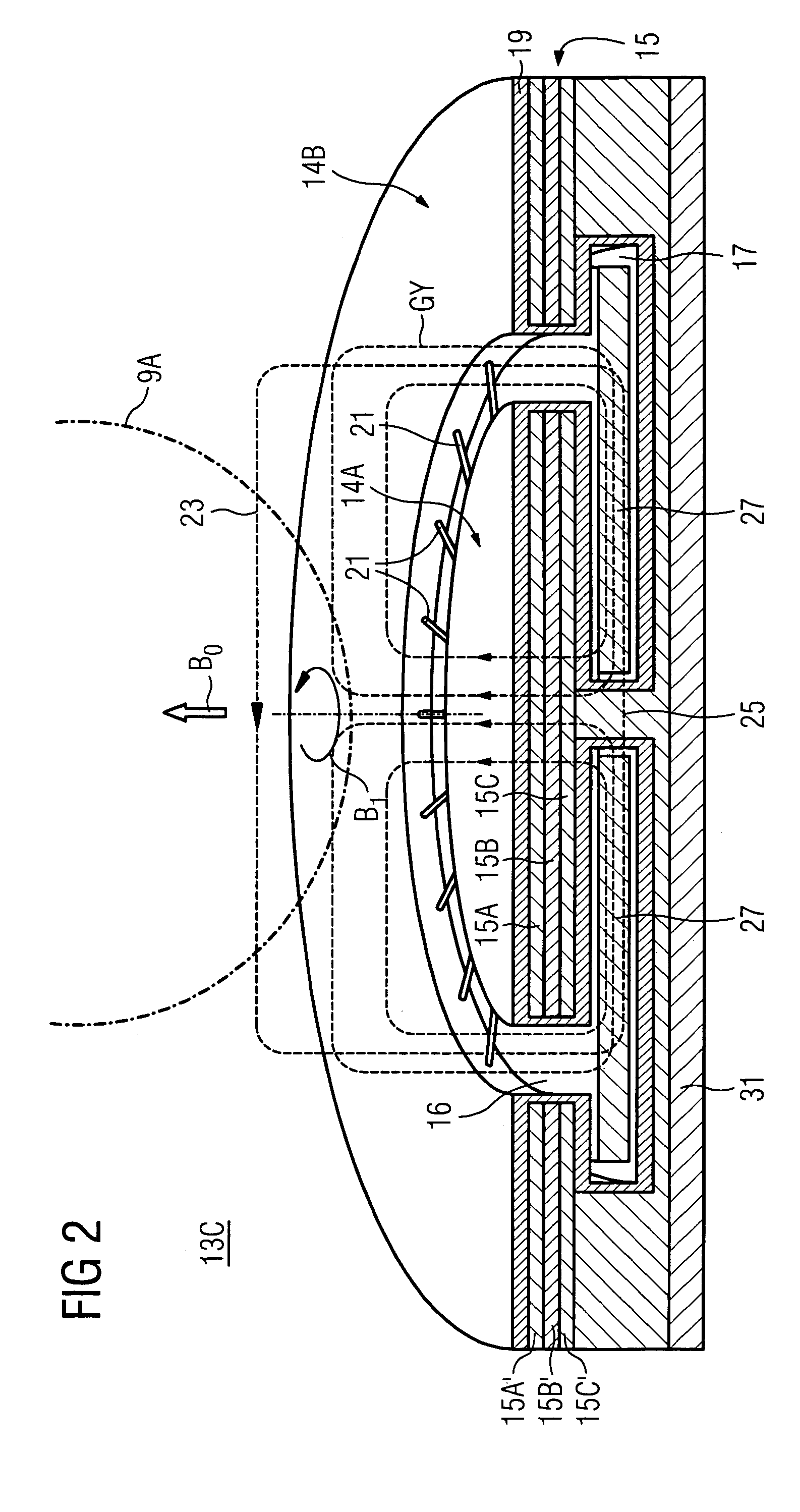Generator of a time-variable magnetic field and magnetic resonance device
a technology of magnetic field and generator, applied in the direction of magnetic measurement, measurement device, instruments, etc., can solve the problems of more compact structure, smaller size, and cost-effective structure, and achieve the effect of reducing h field, efficient generation of magnetic field, and reducing magnetic energy density
- Summary
- Abstract
- Description
- Claims
- Application Information
AI Technical Summary
Benefits of technology
Problems solved by technology
Method used
Image
Examples
Embodiment Construction
[0027]FIG. 1 shows schematically an open magnetic resonance device 1 for medically examining patients e.g. by means of MR tomography or MR spectroscopy in a main magnetic field B0 which is generated with a C-shaped main field magnet 3. The B0 field, which is constant over time, is generated according to the specified system of coordinates along the Y axis and lies e.g. in the order of 0.3 T. Also shown schematically is a patient bed 5 with which a patient 7 can be entered into the examination space 9. The examination space 9 is arranged in the air gap between two pole elements 11A,11B of the main field magnet 3.
[0028]The pole elements 11A,11B have e.g. solenoid actuators. Gradient-coil HF antenna units 13A,13B adapted to the pole elements 11A,11B generate in the examination space 9 on the one hand gradient fields GZ and on the other B1 high-frequency fields which are oriented perpendicularly to the main magnetic field B0. As an example, magnetic-field lines of a gradient field GZ ar...
PUM
 Login to View More
Login to View More Abstract
Description
Claims
Application Information
 Login to View More
Login to View More - R&D
- Intellectual Property
- Life Sciences
- Materials
- Tech Scout
- Unparalleled Data Quality
- Higher Quality Content
- 60% Fewer Hallucinations
Browse by: Latest US Patents, China's latest patents, Technical Efficacy Thesaurus, Application Domain, Technology Topic, Popular Technical Reports.
© 2025 PatSnap. All rights reserved.Legal|Privacy policy|Modern Slavery Act Transparency Statement|Sitemap|About US| Contact US: help@patsnap.com



